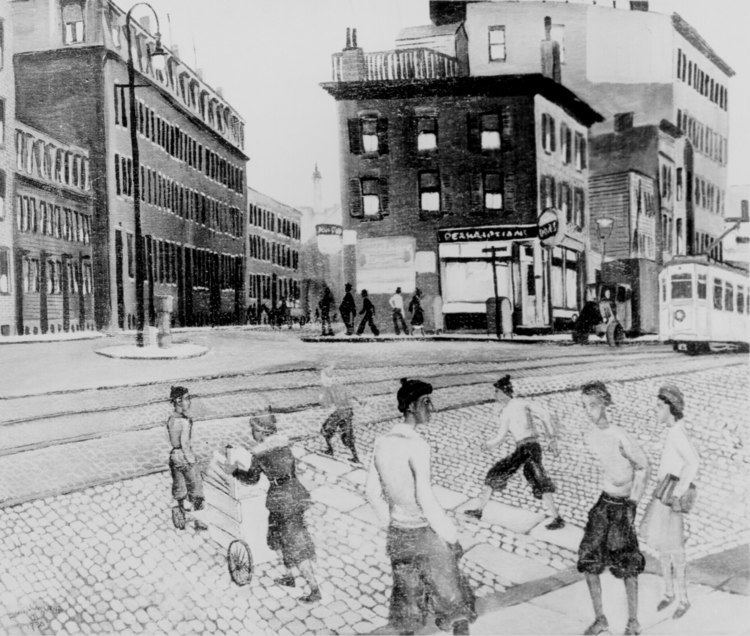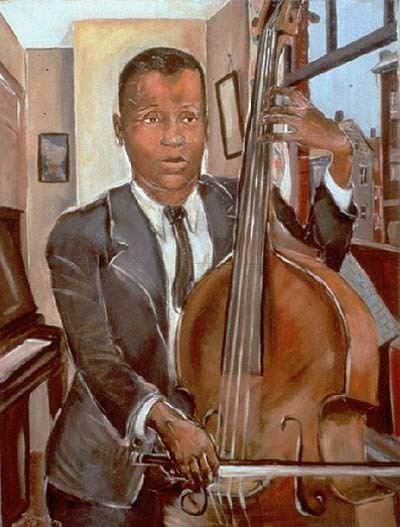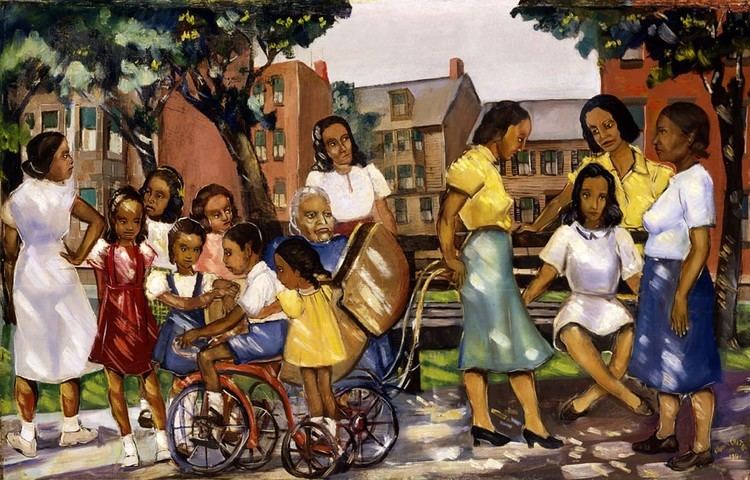Occupation Artist Name Allan Crite | Role Artist | |
 | ||
Books All Glory: Brush Drawing Meditations on the Prayer of Consecration Education School of the Museum of Fine Arts, Boston, Harvard University, Harvard Extension School | ||
Barry gaither on allan crite
Allan Rohan Crite (March 20, 1910 – September 6, 2007) was a Boston-based artist born in North Plainfield, New Jersey. He won several honors, such as the 350th Harvard University Anniversary Medal.
Contents
Personal life

Crite's mother, Annamae, was a poet who encouraged her son to draw. He showed promise early, enrolling in the Children's Art Centre at United South End Settlements in Boston and graduating from The English High School in 1929. Crite's father was an doctor and engineer, one of the first black people at that time to have earned an engineering license.

Accepted at Yale, he instead went to the School of the Museum of Fine Arts, from which he graduated in 1936.

Crite later decided to attend Harvard Extension School, where he completed his studies, receiving an ALB in 1968. He was also awarded an honorary doctorate from Suffolk University in Boston.
Crite was among the few African-Americans ever employed by the Federal Arts Project. In 1940, he began a 30-year relationship with the Boston Naval Shipyard when he took a job as an engineering draftsman.
During his later years, Crite both lived and worked in the Allan Rohan Crite Research Institute at 410 Columbus Avenue in Boston's South End.
He died of natural causes in his sleep at age 97.
Artwork
Crite hoped to depict the life of African-Americans living in Boston in a new and different way: as ordinary citizens or the "middle class" rather than stereotypical jazz musicians or sharecroppers. Through his art, he intended to tell the story of African Americans as part of the fabric of American society and its reality. By using representational style rather than modernism, Crite felt that he could more adequately "report" and capture the reality that African Americans were part of but often unaccounted for.
Crite explained his body of work as having a common theme:
His paintings fall into two categories: religious themes and general African-American experiences with some reviewers adding a third category for work depicting Negro spirituals. Spirituals, he believed, expressed a certain humanity. Crite was a devout Episcopalian, and his religion inspired many of his works. His 1946 painting Madonna of the Subway is an example of a blend of genres, depicting a Black Holy Mother and baby Jesus riding Boston's Orange Line. Other pieces such as School's Out (1936) reflect on the themes of community, family, society. On his faith and the role of litury in his pieces, Crite said in an interview:
"It was very useful, because it gave me a framework of discipline within which to do my work. So I used that, for example, as the frame of discipline to illustrate the spirituals, by making use of the liturgy, the vestments, and everything like that -- using the vestments and appurtenances as, you might say, a vocabulary."
His work is recognizable to the use of rich earth tone colors. According to one biographer, his favorite color was "all colors" and his favorite time of year was "anything but winter." According to one reviewer, "Crite's oils and graphics, even when restricted to black and white, are bright in tonality, fine and varied in line, extremely rhythmic, dramatic in movement, and often patterned."
Crite's works hang in such major American art galleries as the Smithsonian, the Museum of Fine Arts, Grossman Library, the Art Institute of Chicago, and the Boston Athenaeum, to which he left a substantial collection upon his death in gratitude for his long tenure there as a visiting artist and which now holds the largest public collection of his paintings and watercolors.
Books
Among Crite's illustrated books are 1948's Three Spirituals from Earth to Heaven, in which he illustrated religious stories from such African-American spirituals as Swing Low Sweet Chariot and Nobody Knows the Trouble I See.
Exhibitions
Crite's major exhibitions include 1920’s Harmon Foundation Exhibitions, 1930s Museum of Modern Art, New York, 1936 Corcoran Gallery of Art, Washington, D.C., 1939 Boston Museum of Fine Arts, 1978,The Boston Athenaeum, 1997, and the Frye Art Museum, Seattle, 2001.
His works were shown in a coordinated series of posthumous exhibitions in 2007-08, at the Boston Public Library, the Boston Athenaeum, and the Museum of the National Center of Afro-American Artists.
